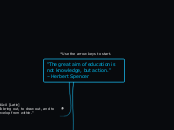Nestlé Waters North America, Inc. is a business-unit of Nestlé Waters that produces and/or distributes numerous brands of bottled water across North America. Continent-wide brands include Perrier and San Pellegrino
Nestlé Waters North America
Nestlé Waters products have been around for over 100 years. Poland Spring water goes back to the 1840s, and Perrier was first bottled in 1863. But what consumers want has changed dramatically thanks to the devices in our pockets.
Solution
Thats how they create: ReadyRefresh
What does ReadyRefresh mean?
ReadyRefresh reflects an increased effort to better serve customer needs. With a broad portfolio of beverage options at the ready, it's easier than ever to keep refreshment on hand. ReadyRefresh is proud to offer expanded delivery hours, flexible frequency options (choose weekly, biweekly, monthly, bimonthly, every 3 months or even one-time ordering) for any product Nestle Waters deliver and increased communication (pre-delivery and post-delivery notifications). Plus, customers will enjoy an easy-to-shop website and much more. Nestle Waters mission is simple: we want to make it easy for you to live a healthier life.
Now the responsibility is to ensure that each consumer has a more relevant experience, one that is helpful rather than interruptive.
It's harder to help when you don't own the end-to-end relationship with your customers as retailers do. So how did Nestle Waters do this?
Subtema
Embrace and share the data
In the past, each of Nestle Waters teams only had visibility into siloed data sources, which led to uncoordinated and overlapping internal activities. Much worse, it created inconsistent conversations with the customers.
With better data sharing, they can also employ audience strategies such as Similar Audiences, which combines their first-party data with Google’s audience data and a modeling algorithm to find prospective customers that behave like Nestle Waters current ones. By reaching out to similar customers, Nestle avoid interrupting people who would not be receptive to their message and reach those more likely to respond.
Create the right teams—and the right content
It's not about digital vs. traditional media vs. packaging vs. public relations. It's about thinking how to connect all the dots for the consumer. To organize around the customer journey, they started integrating digital specialists into all the brand teams. For example, a consumer in the research phase should get a branded message about the benefits of Poland Spring. As she gets closer to purchase, the messaging changes and will get a more direct call to action, driving her to the ReadyRefresh site.
Treat search as shelf space
In the U.S., adults spend almost half of their daily media time on digital.
That's why Nestlé Waters North America created their own e-commerce subscription channel, ReadyRefresh, for water and beverages including Nestea and San Pellegrino. It was a very unusual move for a Consumer Packaged Goods (CPG) company, but it gave Nestle a direct way to accompany their customers at every step of their journey.
Problem
Nestlé Waters didn’t own the end-to-end customer relationship; its retailers did. Consumers now research even the smallest daily decisions. It's not a surprise that some of the customers research a bottle of water as deeply as they research an expensive bottle of wine. They also demand more personalized experiences and are less responsive to mass marketing.









